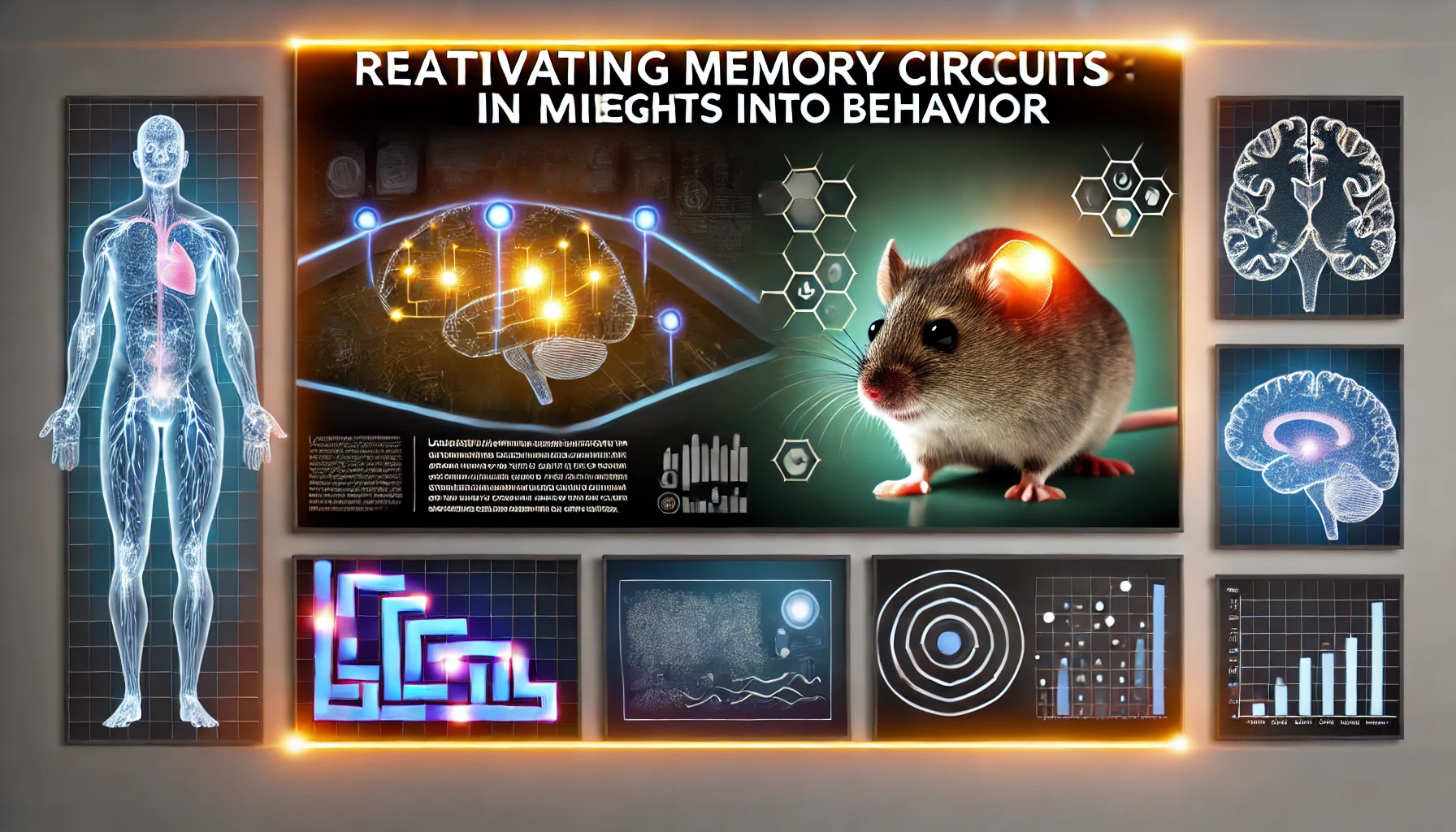Researchers Reactivate Memory Circuits in Mice to Trigger Shelter-Seeking
- Posted by Sophia Martin (America)
- Categories Science
- Date October 2, 2024
In a groundbreaking study, researchers have successfully reactivated memory circuits in mice to induce shelter-seeking behavior, shedding light on the complex mechanisms of memory and behavior in mammals. This remarkable advancement not only enhances our understanding of spatial memory but also opens new avenues for research in neuroscience, particularly concerning how memories can be manipulated to influence behavior. The implications of this work extend to potential treatments for memory-related disorders, including Alzheimer’s disease. In this blog post, we will delve into how the study was conducted, the technologies employed, and the broader implications of the findings.
Understanding Shelter-Seeking Behavior in Mice
Shelter-seeking behavior is a critical survival mechanism for animals. In the wild, animals often seek shelter to avoid predators and environmental dangers. For laboratory mice, this instinct can be studied to understand the underlying neural circuits that govern such behavior. The current study focused on how reactivating specific memory circuits could elicit this instinct even in the absence of a real threat.
Mice were trained to associate a particular location in their environment with safety and shelter. Researchers then used optogenetics to manipulate the activity of hippocampal neurons, crucial for forming and retrieving memories. By reactivating these neurons, scientists were able to trigger shelter-seeking behavior, demonstrating a clear link between memory circuits and behavioral responses(Sainsbury Wellcome Centre)(Welcome to UCLA Health).
The Role of Memory Circuits in Spatial Memory
Spatial memory allows animals to navigate their environment and remember locations associated with resources or dangers. In this study, the researchers targeted specific memory circuits in mice that play a key role in spatial navigation. When these circuits were stimulated, the mice exhibited behavior consistent with their learned association of safety in a particular area, even in a non-threatening environment.
The research highlights the intricate relationship between memory and behavior, showing that memories can be reactivated to produce specific responses. This understanding is crucial, as it can help scientists develop interventions for disorders characterized by impaired memory retrieval, such as Alzheimer’s(Sainsbury Wellcome Centre)(Welcome to UCLA Health).
Utilizing Optogenetics in Neuroscience Research
Optogenetics is a revolutionary technique that enables scientists to control neurons with light. This method involves genetically modifying specific neurons to express light-sensitive proteins, allowing researchers to activate or deactivate these cells using targeted light sources. In this study, optogenetics was pivotal in reactivating memory circuits to trigger shelter-seeking behavior.
By shining light on the targeted neurons in the hippocampus and other related brain regions, researchers could precisely manipulate the animals’ memories and observe resulting behaviors. This level of control is unprecedented in neuroscience and opens new doors for exploring how different neural circuits interact during various behaviors(Sainsbury Wellcome Centre)(Welcome to UCLA Health).
Implications for Alzheimer’s Disease Memory Research
The findings from this study have significant implications for Alzheimer’s disease memory research. Alzheimer’s is characterized by the progressive loss of memory and cognitive function, largely attributed to the degradation of neural circuits involved in memory formation and retrieval. By understanding how to reactivate memory circuits in mice, researchers may develop strategies to restore or improve memory function in humans.
Future therapies could aim to target specific hippocampal neurons to help individuals with Alzheimer’s retrieve memories more effectively. Additionally, the study’s insights into the mechanisms of shelter-seeking behavior could lead to new approaches for alleviating anxiety and improving overall cognitive function(Welcome to UCLA Health) .
The Importance of the Nucleus Accumbens and Dopamine
While the study primarily focused on the hippocampus, the nucleus accumbens also plays a vital role in reward processing and motivation. Dopamine, a neurotransmitter associated with pleasure and reward, is critical in regulating both memory and behavior. The interaction between dopamine release and memory retrieval is a fascinating area of study that can provide insights into how memories influence decision-making.
By examining how these two brain regions work together, researchers can better understand the neural underpinnings of behavior, especially when it comes to making choices based on past experiences(Welcome to UCLA Health).
Future Directions in Memory Circuit Research
The study of memory circuits in mice is just one part of a larger puzzle in understanding how memories are formed, stored, and recalled. Future research could focus on several key areas:
- Longitudinal Studies: Understanding how memory circuits evolve over time and how they can be manipulated at different life stages.
- Broader Applications: Exploring how similar techniques can be applied to other animal models, including humans, to better understand the complexities of memory and behavior.
- Interventions for Mental Health: Investigating the potential for using optogenetics to treat conditions like PTSD, where memories can become maladaptive.
As researchers continue to explore the intricacies of the brain, the potential for innovative treatments and therapies will expand, providing hope for those suffering from memory-related disorders(Sainsbury Wellcome Centre) .
Unlocking the Secrets of Memory
The ability to reactivate memory circuits in mice to trigger shelter-seeking behavior is a significant advancement in neuroscience. This research not only enhances our understanding of spatial memory but also provides a foundation for future studies into how memory manipulation could lead to treatments for disorders like Alzheimer’s disease.
By utilizing techniques like optogenetics and understanding the roles of critical brain regions such as the nucleus accumbens and hippocampal neurons, scientists are uncovering the secrets of memory and behavior. The implications of this research extend beyond the laboratory, potentially changing the way we approach mental health and cognitive function in the future.
For further insights into neuroscience and the latest scientific advancements, visit Regent Studies.
External Reference:
For more details about the study on memory circuits and shelter-seeking behavior, check out Johns Hopkins Medicine.
Previous post
Exploring the Feasibility of Human Head Transplant Surgery: Success Rates and Future Prospects
Next post




